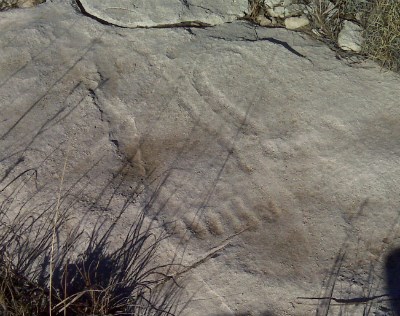
NPS Photo No one knows exactly when the first people came to the Canadian River region of the Texas Panhandle, but archaeological evidence dates back over 13,000 years ago. The earliest people were nomadic hunter-gatherers who followed available game and ripening plants. Evidence of their existence has been found throughout the area. The Spanish, led by Francisco Vazquez de Coronado, encountered bison-hunting nomads whom they called "Querechos." Modern scholars have identified these people as ancestors of the Apaches. Although the Spanish only passed through the area in their futile quest for wealth, their influence was significant because they introduced horses into the area. No longer would the Native American people hunt bison on foot. 
NPS / Nevin Kempthorne The Comanche moved into the region in the early 1700s. They carried out hunts in the region and migrated from the Rocky Mountains where they discovered horses. They had seperated from the Shoshone, who they had migrated with into modern day Utah. The Comanche excelled with the introduction of the horse and quickly became a powerful force. They ruled the plains from the early 1700s until the 1870s. Texas joined the United States in 1845, but the United States Army was unable to remove the Comanche from the Panhandle until most of the bison had been slaughtered be American hunters. Facing starvation with the near extinction of the bison, loss of grazing land, food, horses, and shelter from attacks by US military, the Comanche joined other tribes on reservations in 1875 in Indian Territory, modern day Oklahoma. The forcible removal of the Plains Indians from the Panhandle encouraged pioneers, ranchers and settlers to head west. Thomas S. Bugbee established the Quarter Circle T Ranch, the second oldest ranch in the Panhandle, in late 1876 along a creek that today bears his name. The following year, the LX Ranch, which included present day Alibates Flint Quarries and the surrounding area, was established by W.H. Bates and David T. Beals. In 1897, David N. McBride and his family settled on a section of land in the center of the LX Ranch. The family's stone ranch house still stands today in what is now known as McBride Canyon. Their house is the oldest standing house in Potter County. |
Last updated: April 13, 2024
